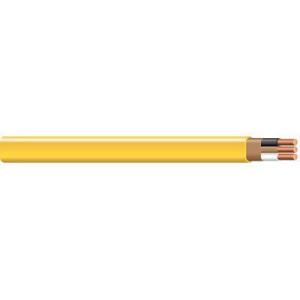|
|
| This is a 3 way or 3way or S3 switch. It has 3 terminal screws and a 4th green ground screw. 3 ways are not labeled on or off. |
⊱There is more than one way to wire and connect a 3 way switch circuit, more than 8 are explained here in this article.
⊱Use 14 gauge wire and 15 amp rated switches on a 15 amp circuit breaker.
⊱Use 12 gauge wire and 20 amp rated switches on a 20 amp circuit breaker.
⊱Do not use 10 gauge wire for residential switches or receptacles.
⊱You will be able to make a 3 way work properly as long as there is;
✓ power (hot + neutral) at any one of the 3 ways or the light,
✓ a switch leg to the light from either switch
✓ and a minimum of 3 insulated wires with a 4th ground wire between them. (a 14/3 with ground nmb cable)
⊱You must understand 6 important terms related to 3 way switch wiring
6 Important Terms
The first 4 terms relate to the duty or role or function of a wire. When learning how to wire an S3 or 3way or 3 way (there's even 3 ways of saying it), beginners often make the mistake of focusing too much on wire colors instead of these 4 different wire functions;
1) Feed or Power a hot wire that is "incoming" to provide electricity to a switch or receptacle. It is not controlled by a switch. It can refer to only the hot wire or both the hot and neutral wire.
2) Traveler a pair of wires that connects 3way and 4way switches together at their traveler terminals. 1 traveler on 1 switch is wired to one traveler on the 2nd switch but the 2 traveler terminals on the same switch never connect together, if they did it would function like a single pole.
3) Switch leg the wire that connects a switch to the light and becomes energized when the switch is closed or flipped on.
4) Common the only terminal screw on a 3 way that internally connects to either of the 2 traveler screws, one at a time.
You must be able to identify these 4 wire functions in order to assemble a 3way or 4way wiring circuit. Keep in mind that;
You must be able to identify these 4 wire functions in order to assemble a 3way or 4way wiring circuit. Keep in mind that;
- Electrons do not obey color codes, they follow conductors (insulated metal wires)
- Wires used for the feed, traveler and switch leg are supposed to be certain colors but with the circuit you are working on the electrician may have used any color in any combination.
It is also important to know the difference between 14/2 and 14/3;
 |
| This 3 wire or "14/3 with ground NM-B romex sheathed cable" actually has 4 wires each size 14; 1 black, 1 red, 1 white and 1 bare. Photos http://www.homedepot.com |
 |
| Yellow sheathing on 12/2 This 2 wire actually has 3 wires each size 12; 1 black, 1 white and 1 bare copper ground. |
5) 2 wire 14/2 or 12/2 technically defined as;
"14/2 with ground Non Metallic Sheathed Cable" It is a cable containing 3 wires. 2 insulated conductors and one bare ground. A black conductor, a white conductor and a bare ground.
The number 14 in 14/2 defines the size of the conductors.
The number 2 in 14/2 defines the number of current carrying conductors. This does not include the ground.
6) 3 wire 14/3 or 12/3 technically defined as;
"14/3 with ground, Non Metallic Sheathed Cable" It is a cable containing 4 wires. 3 conductors and one ground. A black conductor, a red conductor, a white conductor and one bare ground.
The number 14 in 14/3 defines the size of the conductors as American Wire Gauge Size 14.
The number 3 in 14/3 defines the number of conductors. The 4th wire, the ground, is not counted because it is not suppose to conduct a current unless there is a fault.
Also;
- Some wire manufactures wrap size 14 wires in white sheathing and size 12 wires in yellow sheathing.
- Size 10 wire is rated at 30 amps and is not used on switch wiring. Standard switches are rated for 15 amps with heavy duty or commercial switches rated at 20 amps, not enough for 30 amp 10 gauge wire.

nice article! Im looking for wholesale electrical wire here in the Philippines
ReplyDelete